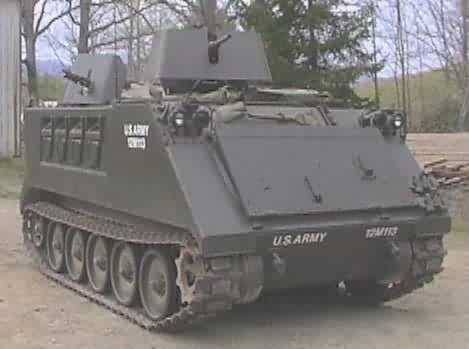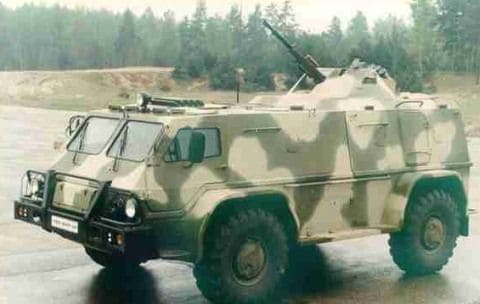By the Author of the Scrapboard : | |
|---|---|
 | Attack, Avoid, Survive: Essential Principles of Self Defence Available in Handy A5 and US Trade Formats. |
 | |
 | Crash Combat Fourth Edition Epub edition Fourth Edition. |
 | |
 | |
 First of all are the softskins. These are military vehicles without any armour, or protection just designed to resist fragments not small arms. Many of the so called “Armoured HMMWVs” of pre-M1114 vintage are of the latter category. Soft skins are essentially for peacetime soldiering or for operation in rear areas where there is little chance of attack by enemy guerillas. In modern and future conflicts such situations are unlikely, but still we see softskins being used, even by front-line units. Vehicles such as the HMMWV should not be used in such operations since there are plenty of more suitable options.
First of all are the softskins. These are military vehicles without any armour, or protection just designed to resist fragments not small arms. Many of the so called “Armoured HMMWVs” of pre-M1114 vintage are of the latter category. Soft skins are essentially for peacetime soldiering or for operation in rear areas where there is little chance of attack by enemy guerillas. In modern and future conflicts such situations are unlikely, but still we see softskins being used, even by front-line units. Vehicles such as the HMMWV should not be used in such operations since there are plenty of more suitable options. The second category are the true combat vehicles. This category has some sub-divisions.
The second category are the true combat vehicles. This category has some sub-divisions. The LAMO vehicle should offer good protection against small arms and anti-vehicular mines since both are likely to be present in a post-conflict area. For many missions a “non-threatening” appearance will be deemed as desirable. It should also be able to operate among civilian traffic without any special precautions. While it seems likely that such a vehicle would be wheeled many of these criteria eliminate big beasts such as the LAV Stryker and similar. Road conditions or access to disaster areas may be restricted so good cross country performance will be an asset. In flood conditions amphibious ability will be useful, and the vehicle should at least be capable of deep fording. In certain situations mob-violence is a possibility, so systems to deal with this should be present on all vehicles and vehicles should not be so light that they can easily be overturned. Self-defence capability will also be needed. Both Smoke and CS grenade dischargers should be fitted as standard. There will also need to be provision for carrying a wide range of equipment. For checkpoint duty metal and explosive detectors and inspection mirrors will be needed. Auxiliary weapons will probably include shotguns with LLW ammo and some system for the remote laying of a large scale smokescreen, such as a modified M72 LAW or the 3BT. Standard communication gear will include a distress beacon and ground to air system for communication with helicopters. Armament will probably be Machine guns, Light Cannon or Mk-19 grenade launchers. Provision for mounting a 84mm Carl Gustav, 90mm M67 or 106mm M40 would prove useful for defending checkpoints or suppressing snipers.
The LAMO vehicle should offer good protection against small arms and anti-vehicular mines since both are likely to be present in a post-conflict area. For many missions a “non-threatening” appearance will be deemed as desirable. It should also be able to operate among civilian traffic without any special precautions. While it seems likely that such a vehicle would be wheeled many of these criteria eliminate big beasts such as the LAV Stryker and similar. Road conditions or access to disaster areas may be restricted so good cross country performance will be an asset. In flood conditions amphibious ability will be useful, and the vehicle should at least be capable of deep fording. In certain situations mob-violence is a possibility, so systems to deal with this should be present on all vehicles and vehicles should not be so light that they can easily be overturned. Self-defence capability will also be needed. Both Smoke and CS grenade dischargers should be fitted as standard. There will also need to be provision for carrying a wide range of equipment. For checkpoint duty metal and explosive detectors and inspection mirrors will be needed. Auxiliary weapons will probably include shotguns with LLW ammo and some system for the remote laying of a large scale smokescreen, such as a modified M72 LAW or the 3BT. Standard communication gear will include a distress beacon and ground to air system for communication with helicopters. Armament will probably be Machine guns, Light Cannon or Mk-19 grenade launchers. Provision for mounting a 84mm Carl Gustav, 90mm M67 or 106mm M40 would prove useful for defending checkpoints or suppressing snipers.By the Author of the Scrapboard : | |
|---|---|
 | Attack, Avoid, Survive: Essential Principles of Self Defence Available in Handy A5 and US Trade Formats. |
 | |
 | Crash Combat Fourth Edition Epub edition Fourth Edition. |
 | |
 | |